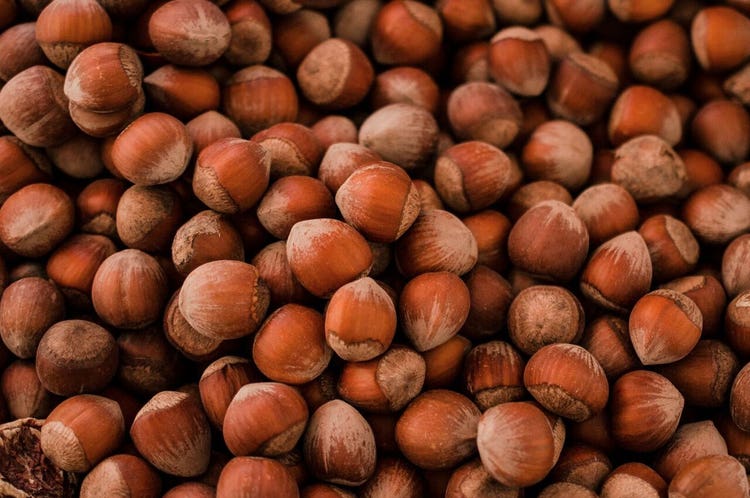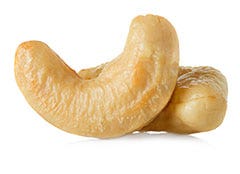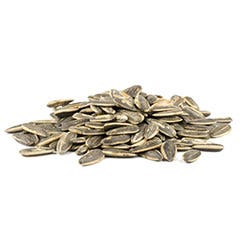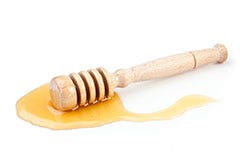Nuts about nut butters

Are some nuts or seeds better than others?
We’ve come a long way from just peanuts. Today, we know that most nuts are a source of “good” fat, and we have more nut butter options on grocery store shelves. But if you’re topping your toast — or topping up your smoothie — with a nut butter or seedy spread, you might be wondering what’s really in that jar.
Cashew Butter
Raw or Roasted

Compared to roasted cashews, the raw version may contain more nutritional value, but the dry roasted nut gives a creamier texture and flavor.
The verdict: A top flavor choice. Naturally sweeter than many nut butters and with a mild flavor, cashew butter is a great addition to smoothies and hot cereal, as it won’t overpower the taste of other ingredients. As with most nut and seed butters, it’s still high in calories, so ensure you monitor your portion size and stick to two tablespoons or less.
No-Stir Almond Butter
Although dry roasted almonds are the star ingredient, the addition of palm oil to stabilize the nut butter for “no stir” convenience also means added fat — the unhealthy kind.
The verdict: Almonds and almond butter are a nutritional powerhouse. Look for varieties with no added salt or sugar — or added oils. It might take you a few seconds to stir for a smooth texture, but you’ll skip the extra nasties.
Tahini
Tahini is made from ground sesame seeds and is a key ingredient in hummus. Sesame seeds are high in iron and calcium, making tahini a smart addition to a vegetarian or vegan diet.
The verdict: Tahini is a nutritional winner and a great option for those who can’t tolerate peanuts or tree nuts. In addition, certified-organic products are made with seeds that are grown without the use of pesticides or chemical fertilizers, and are not genetically modified.
Sunflower Seed Butter
(Sunbutter)

Sunflower seed butter is a great alternative to butter, and a good option for those who can’t have nuts. Unfortunately, some products come with added sugar and salt, making them higher in calories and easy to overeat when scooping straight from the jar.
The verdict: Best to consume sunbutter in moderation if you can’t find an unsweetened variety, or simply make your own by blending sunflower seeds in a food processor until smooth.
Mixed Nut and Seed Butter
A mix of nuts and seeds can cover all of your nutritional bases. For example, Brazil nuts are a good source of selenium, a powerful antioxidant important for immune function. And omega 3-rich flaxseeds help reduce inflammation and boost skin complexion.
The verdict: Even products with a pinch of added salt have a high nutrition profile — and nice flavor complexity, compared to your standard peanut butter.
Raw Pecan Walnut/Cashew Butter
When nuts are ground using a low temperature grinding process, they retain more heat-sensitive B vitamins.
The verdict: Find blends like this in single-serve packets, which are perfect for portion control and allow you to try a few different spreads before buying a whole jar. Pop one in your bag with a piece of fruit for the perfect afternoon snack.
Flavored Nut Butters
(Maple, Honey, Chocolate varieties)

With added sugar, salt and flavorings, these blends are slightly more decadent than your average nut butter. Although honey and maple syrup are both natural sweeteners, they still add calories and sugars and are best consumed in moderation.
The verdict: Compared to dessert-style spreads like the famous chocolate-hazelnut, these nut butters are the clear winner. However, it’s still best to save them for special occasions. To satisfy your sweet tooth with fewer calories, try adding fruit or spices to a pure nut butter instead.
DIY Raw Choc-Nut Spread
- 1 ½ cups raw hazelnuts
- 5 tablespoons cacao powder
- 6 Medjool dates
- 1/3 cup water (may need to add a little more)
- 2 tablespoons extra virgin coconut oil
- ½ teaspoon vanilla extract
- Pinch of sea salt
Method
Add hazelnuts to a processor or high-speed blender and process until they form a sticky dough. Add the rest of the ingredients and process until you get a smooth, creamy, thick chocolate spread.